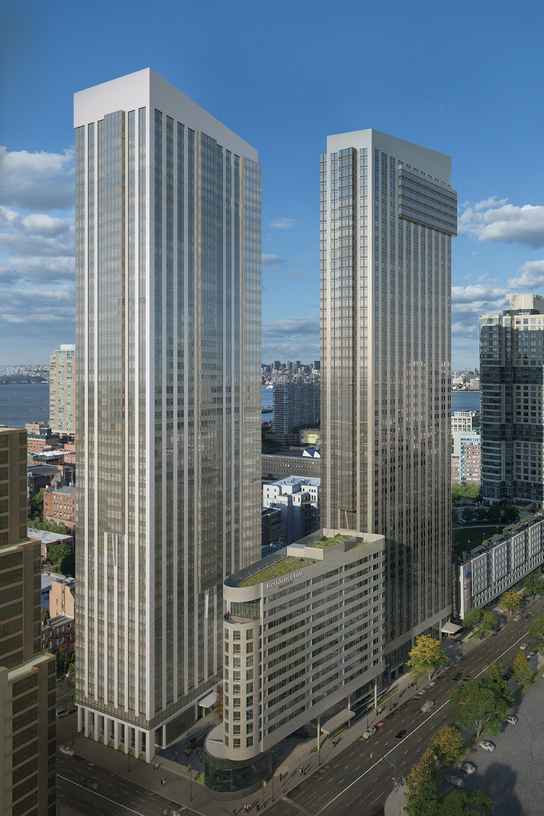EB-5
Immigration Through Investment
In 1990, Congress introduced the EB-5 Program in order to stimulate the U.S. economy and boost job creation, while allowing eligible foreign nationals to invest $500,000 or $1,000,000 in a new commercial enterprise or pre-approved regional center and become lawful U.S. permanent residents in as little as 8-10 months.
Foreign nationals can bring their immediate family members with them – a spouse and unmarried children under 21 – to enjoy the freedom of living, studying, working, or retiring in America.
WHY CHOOSE US TO REPRESENT YOUR EB-5 CASE?
I-526 approval rate
I-526 petitions filed to date
Years of immigration law expertise
EB-5 VISA OPTIONS
Based on Circumstances and Long-Term Goals, Investors can Choose From Two Distinct EB-5 Pathways:

Direct, Individual EB-5 Investment
This type of investment is best-suited for individuals who plan to move to America and start their own business that will meet the minimum job creation requirement (create and preserve at least 10 direct full time jobs). Immigrants who choose this pathway will be directly involved in the creation and day-to-day management of their new business enterprise for at least five years, based on current processing times. In most cases, candidates should possess business/managerial expertise and sufficient English proficiency.

EB-5 Regional Center Investment
Regional Center Immigrant Investment Program is a perfect choice for foreign nationals who prefer investing their funds in an established project sponsored by a designated regional center (approved by USCIS). This “passive” form of investment eliminates the need for foreign nationals to meet the minimum job creation requirement, run daily business operations or live in the place of investment. Immigrants get to reside, study, work and retire anywhere in the USA and get their investment back after the project completion.
The investment of $500.000 or $1.000.000 is returned after about 5 years, when the foreign investor becomes eligible for the U.S. citizenship.
*However, the regional center cannot guarantee that the investor’s original investment will be fully refunded. Under the U.S. Immigration and Nationality Act, the investment must be authentic, and the investor must risk his or her personal capital. If the regional center guarantees a refund, the USCIS will not consider the underlying monetary contribution to the regional center as an investment.
EB-5 EXPERTISE

Times Square Hotel
Investors

Park Avenue Hotel
444 Park Avenue South, New York, NY 10007
Investors

Central Park Hotel
Investors

Hakimian Hotel
Investors

Knickerbocker Hotel
Investors

Iron State Residential and Commercial Building
Investors

Livingston Apartments
Investors

SOHO Condominium
Investors

Remsen Apartments
Investors

Columbus Apartments
Investors
EB-5 TIMELINE
 1
1Start
 2
2About 16 Months
- I-526 Approved
- You and Your Family Get Temporary Green Cards
 3
32 Years
- File I-829
- You and Your Family Get Permanent Green Cards
 4
45 Years
About 16 Months
Temporary Green Card
Form I-526, Petition by Alien Entrepreneur is adjudicated within about 16 months after filing.
Upon approval of Form I-526 petition, either: Form I-485, Application to Register Permanent Residence or Adjust Status, is filed with USCIS to adjust status to a conditional permanent resident within the United States, or DS-230 or DS-260, Application for Immigrant Visa and Alien Registration, is filed with the U.S. Department of State to obtain an EB-5 visa for admission to the United States.
The EB-5 investor and immediate family members are granted conditional permanent residence for a two-year period upon the approval of the I-485 application or upon entry into the United States with an EB-5 immigrant visa.
After 2 Years
Removing Conditions
Form I-829, Petition by Entrepreneur to Remove Conditions, is filed 90 days before the two-year anniversary of the granting of investor’s conditional Green Card.
If USCIS approves this petition, the EB-5 investor and immediate family members receive permanent Green Cards.
After 5 Years
Naturalization
The EB-5 investor and immediate family members are eligible for U.S. Citizenship, provided they meet the presence and other standard requirements.
EB-5 FREQUENTLY ASKED QUESTIONS
EB-5 Program
I-526 Petition
Moreover, USCIS does not seem to offer much guidance on this topic.
I believe that USCIS must deny Forms I-526, Immigrant Petition by Alien Entrepreneur, filed by a minor UNLESS certain conditions are met.
I see two (2) major issues involving minor EB-5 investors:
1. Investment at risk
Neither the Immigration and Nationality Act (“INA”) nor the Regulations address this question of minor EB-5 investors directly. However, the INA specifically states that the EB-5 investment has to be “at risk.” In most jurisdictions, the minimum age for signing binding contracts is 18. Specifically, in the state of New York, “[a] contract made on or after September first, nineteen hundred seventy-four by a person after he has attained the age of eighteen years may not be disaffirmed by him on the ground of infancy.” See NY General Obligation Law Sec. 3-101. If a person under 18 enters into a contract, such contract may be voidable. Therefore, from USCIS’s point of view, if a contact can be voided at any time, the underlying investment cannot be an “investment at risk.”
As a result, if a minor wants to be an EB-5 investor, s/he has to enter in a binding contract that cannot be voided on a whim. Considering that minors, generally, are unable to enter into legally binding contracts or that minors enter into contracts that, generally, can be voided by them, such investments cannot be “investments at risk” and USCIS must deny the underlying I-526’s as a matter of law.
HOWEVER, if one of the minor's parents co-signs the relevant contacts with the minor, such contracts will be legally binding on the minor, which will satisfy the investment at risk requirement under the Immigration and Nationality Act.
2. Engaging in a new commercial enterprise -- active involvement
In order to meet the “engage in a new commercial enterprise“ requirement, the new commercial enterprise must be a limited or general partnership. (In the context of a minor’s eligibility to be an EB-5 investor only. For adult EB-5 investors, the structure of a new commercial enterprise is irrelevant.)
For purposes of a minor’s eligibility to be an EB-5 investor, the structure of the new commercial enterprise is very important. Under the INA, an EB-5 investor has to “engage in a new commercial enterprise”. See INA Sec 203(b)(5). Hence, in order to file a successful I-526, the EB-5 investor has to show that s/he will be “engaged in the management of the new commercial enterprise, either through the exercise of day-to-day managerial control or through policy formulation, as opposed to maintaining a purely passive role in regard to the investment.” See 8 CFR Sec. 204.6(j)(5).
Investors under 18 may need a custodian to invest their funds. The issue with having a custodian is that if the custodian has to manage the minor’s funds, can the minor really be “engaged in the management of the new commercial enterprise” as the regulations require it?
Therefore, if the new commercial enterprise is NOT a partnership, either limited or general, because minor EB-5 investors are unlikely to legally "engage in a new commercial enterprise," USCIS should deny the underlying I-526 petitions as a matter of law.
HOWEVER, "if the petitioner is a limited partner and the limited partnership agreement provides the petitioner with certain rights, powers, and duties normally granted to limited partners under the Uniform Limited Partnership Act, the petitioner will be considered sufficiently engaged in the management of the new commercial enterprise." 8 CFR Sec. 204.6(j)(5)(iii). Therefore, if minors are general or limited partners in a partnership, USCIS should find that they “engage in a new commercial enterprise".
Your EB-5 Investment
Green Cards
- Live, work or retire in the U.S.A.
- Work or visit other countries as long as you maintain a residence in the U.S.A.
- Sponsor green cards for relatives
- No work permit necessary to work in the U.S.A.
- Travel to other countries and return without a visa
- Pay the same school costs as U.S. residents
- 5 years after receiving your temporary green card, you are eligible for U.S. Citizenship
After one year and 9 months, the investor will have a 3 month window to file the I-829 application, which verifies that all of the funds have been invested and the required 10 jobs have been directly or indirectly created. After the I-829 application is approved by the USCIS, you will be issued a Permanent Green Card.
The second requirement is that you do not abandon the United States as your permanent residence. As a general rule, if you have a green card and leave the United States for more than a year, you may have a difficult time re-entering the United States. The USCIS considers an absence of longer than one year possible abandonment of your U.S. residence. You should return to the United States within six months to avoid a full-scale inspection.
